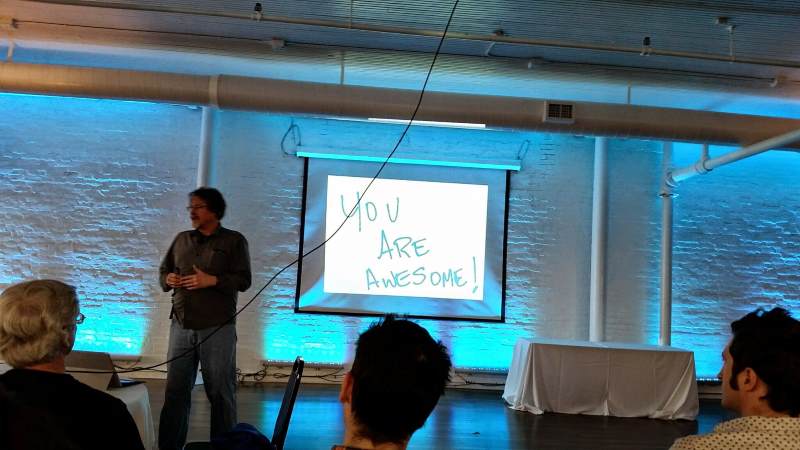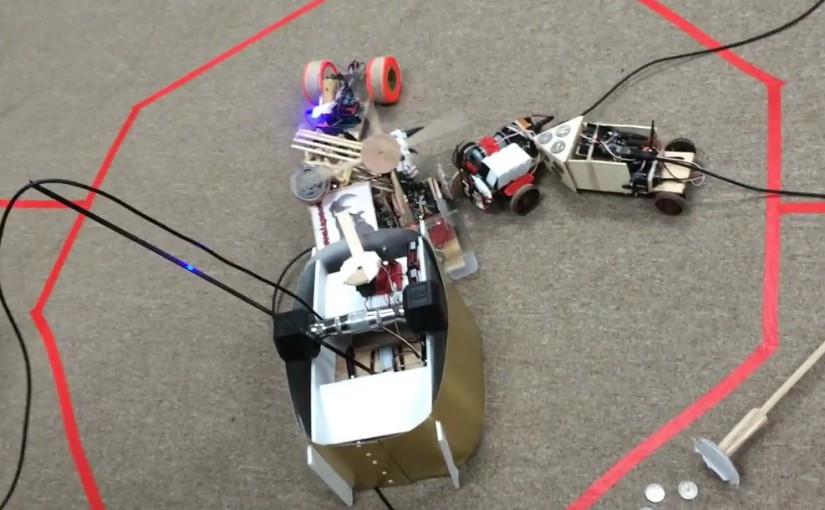This weekend a couple of friends stopped by the house at around 5:45 on Saturday morning. Normally, this would not be welcomed, but it was time for our annual road trip out to attend the Kalamazoo X conference. This year marked my third year of attending this fantastic one-day, single-track, soft-skills conference. Though often referred to as a non-tech conference for techies, Kalamazoo X is a really accessible event and as such, this was the second year that my wife, Chrissy, also joined us.
This year's conference was held at Loft 310. I found the new venue — with attendees sat around tables similar to how people would be seated at a wedding or party — to be an improvement over last year. Though fantastic, last year's academic venue, larger attendance, and expanded speaker schedule lost much of the intimacy and community that made my first year at KalX a memorable and somewhat life adjusting event. This year was a return to that more intimate experience of two years ago, feeling much more like a gathering of friends and family than a conference of professionals.
The speaker schedule was also condensed this year and all the better for it. The roster included a welcome return of some KalX veterans like Jeff Blankenburg (@jeffblankenburg), H. Alan Stevens (@alanstevens), Jim Holmes (@aJimHolmes), and Elizabeth Naramore (@ElizabethN), as well as some newcomers like Jay Harris (@jayharris), Cori Drew (@coridrew), and Dawn Kuczwara (@digitaldawn). Though each topic was different, they were bound by the common year-on-year KalX themes of learning, mentoring, and growing.
Upon reflection, the talks that I remember most vividly were those where the speaker opened up, let down barriers, and gave honestly to the audience. Alan Stevens was, as always, a joyous speaker to experience — his command of space and time when delivering a talk is really exemplary, yet it was his candidness in discussing his struggle with depression with which I connected. While Cory House (@housecor) spoke on breaking the monotony in life and stepping outside of our comfort zones, it was when he opened up about his social anxieties and personal journey to overcome them that I took notice. And though Jay Harris delivered as polished a presentation as he ever has, it was his willingness to share his broken dreams of baseball and airplanes, open up about personal challenges, and be as raw with the attendees as he is with his friends that took his talk from good to great.
Though I enjoyed all the talks, it was Jay's talk, #conviction, that stood out most for me. Jay's message felt like the third part to a trilogy that started with Jeff Blankenburg's talk, "Be A Beginner", and was fleshed out by Alan Stevens' talk on "Values Driven Development". Jay judiciously spent every second of his time with a well thought out rebuttal to the too often repeated adages "follow your passion" and "hard work pays off". It is easy to ignore the privileges we have that we more commonly refer to as "talents", to let humility lessen their importance, but it is talent coupled with conviction that leads to success1.
Of course, it was not just about the guys. There was not only a more diverse audience than one might expect, but three of the eight speakers were women2. A favourite talk of the day for me was "Give Up!" from KalX newcomer, Dawn Kuczwara. Through personal anecdotes and a wonderful, personable delivery, Dawn explained the importance of letting go of control, of allowing people the opportunity to fail and learn, and of making sure not to stifle the growth of yourself or your team by micromanaging and "helping". To me, this talk was the second part to another trilogy that was started by Cori Drew and her impassioned (though perhaps a tad too long) talk that related her experiences mentoring her daughter from curious kid to seasoned speaker (at age 11), and closed with Elizabeth Naramore explaining why it is always OK to follow your passions in your leisure time, regardless of talent.
Though it was a long, tiring day (I drove, drank far too much caffeine, and stayed up way too late), Kalamazoo X was a day well spent. I am grateful to Michael Eaton (@mjeaton), Matt Davis (@mattsonlyattack), and all their minions, speakers, and tolerant friends and family for the time and patience spent in organising and delivering a terrific conference. Once more, after CodeMash had refreshed my curiosity, Kalamazoo X reset my spirit.


